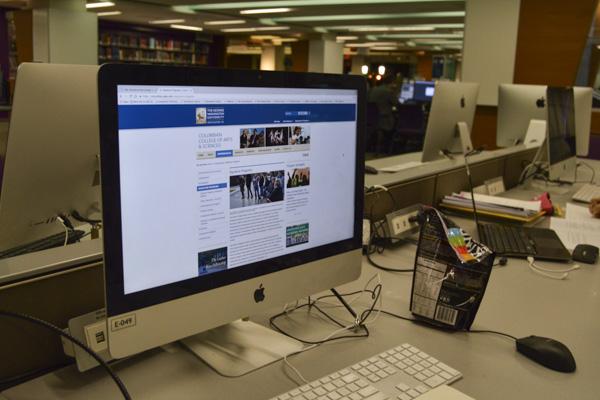Columbian College of Arts and Sciences websites are getting a facelift.
The University will update CCAS’s main website and more than 50 webpages for departments, institutes, programs and centers with GW’s new editorial theme, which was released in an update to the University’s main website last month. Faculty members said they hope the redesign will make CCAS websites more informative and interactive for students.
“CCAS is in the initial planning stages and does not have an update at this time,” University spokeswoman Maralee Csellar said in an email about the redesigns. “The goal is to create a more easily navigable, mobile-friendly site that incorporates an engaging visual identity.”
Csellar added that all the work to update the websites will be performed in-house, as it was with the University’s main website update
Last month, GW unveiled a new design for its main website that includes interactive elements and a focus on social media after, going nearly four years without any major design changes.
Currently, the CCAS school and department websites do not have interactive or multimedia elements. Some pages have not been filled in with up-to-date information, with some links – like those to news and events pages – dating back several years.
Some CCAS faculty members said they had not yet heard about the planned update but said a new interface could help them more easily share information about the work they’re doing.
Margaret Soltan, an associate professor of English, said she was recently trained on how to use Drupal, GW’s content-management and website editing platform, so that she could update her department’s website. Soltan has ideas on how to make the website more dynamic, but the current system imposes limitations on adding creative features, she said.
The English department’s current website has generic images that do not relate directly to the department and is cluttered with text, which are both problems Soltan said she hopes an update will solve.
“For me, the basic philosophy of changing this page is dynamism. We need to make the department look like stuff is happening here,” she said. “I think that the welcome page should definitely be about communicating that there’s lots going on, that there’s activity, that there’s interesting courses.”
CCAS pages would appear more put-together with a consistent design, Soltan added. But she said she hopes the departments to have some control over their pages looks and content.
“I certainly hope that a reasonable measure of autonomy – in terms of choice of images and of course the content of descriptive copy and the like – for departments and other units continues under the new approach,” she said.
Stephen Forssell, the director of the LGBT health graduate certificate program, said he was also unaware of the coming updates. He said he hopes that the new design won’t make visual attributes his program has worked on, like its logo, disappear.
“I’m wondering how radically it will change the visuals on the website,” he said. “Will things that we need to do on the website, that we can do now, will we be able to continue to do them? Will it offer us any new bells and whistles?”
He added that it’s fairly easy to update the LGBT health graduate certificate now but there are some constraints on individual pages to keep them within GW’s branding.
“The look has to be a GW look – we can’t do our own thing as a program,” Forssell said. “So you know the menu buttons are sort of that left side thing and you can’t do ones across the top. You have to use the fonts and the colors, the stuff that is all GW official, but these are certain constraints that we just learn to live with.”
Philip Zastrow, a web developer who redesigned the University of Notre Dame’s website, said in an email that it would likely take at least a few years to update all of CCAS’s websites. He added that developers should maintain an editing platform like Drupal, which GW uses, and a common editorial theme, which GW is currently implementing.
“The key is a consistent base,” Zastrow said. “This helps the web team have something to familiar to work in, but it also keeps things familiar for the rest of the school and those that will be working on the website each day.”








